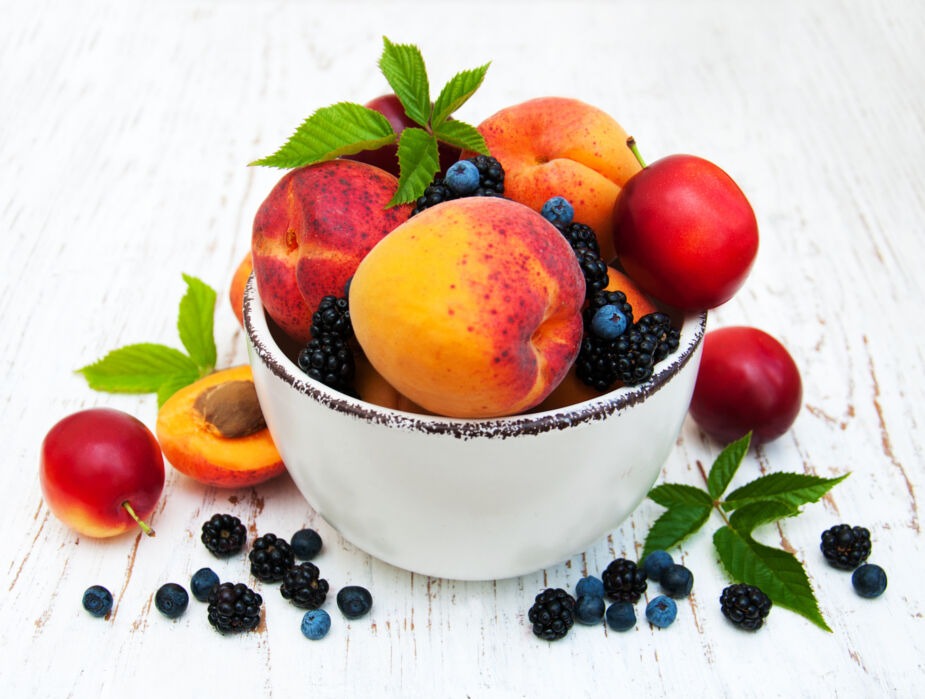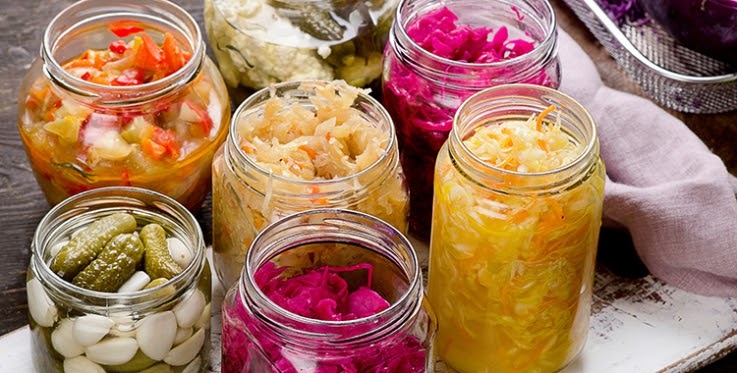By Amy Burkhart MD, RD Updated 2024
The low histamine diet is being used to treat problems such as rashes, headaches, bloating, and long-haul COVID-19 symptoms, and histamine intolerance (HIT). For those suffering from HIT, the low histamine diet is the primary treatment. After a quick explanation of histamine and histamine intolerance, let’s discuss the low-histamine diet and determine if it works.
Histamine
What Is Histamine?
Histamine is a chemical found naturally in all cells of our body. It is an important component of the immune and nervous systems. Histamine can trigger the immune system and cause symptoms like swelling, rashes and watery eyes. If it affects the nervous system it may cause problems such as headaches, digestive problems and pain.
In addition to the histamine that our body makes, it is also naturally present (or can develop) in certain foods. Histamine content is especially high in fermented foods. But wait – aren’t fermented foods supposed to be good for you? Keep reading for an answer to that question!
Histamine Intolerance Explained
What Is An Intolerance To Histamine?
Histamine intolerance (HIT) isn’t a true allergy like we see with bee stings or peanuts. Histamine intolerance is a mismatch between too much histamine in the body and the speed at which the body clears it. If too much histamine is released, it is not broken down fast enough; a person doesn’t feel well.
How much is too much?
Individual histamine tolerance varies from person to person. Picture histamine tolerance like a unique water bucket for each person, influenced by various health factors. As the bucket fills, symptoms may arise when it overflows. Notably, gut health plays a significant role in determining how your body responds to foods containing histamine. Understanding and managing your histamine tolerance is crucial for maintaining well-being.
For a more detailed explanation of histamine intolerance, read my previous article on histamine intolerance.here or at the link below.
Histamine Intolerance: Symptoms, Diet & Treatment: Related Article- Click Here
Histamine Intolerance Symptoms
Too much histamine causes symptoms Bloating is most common
Other symptoms include:
- Diarrhea(1, 2)(3).
- Migraines or other headaches
- Stomach pain or IBS
- Anxiety
- Fast heart rate
- Hives, itching
- Red color/flushing of skin
- Wheezing
- Watery eyes
- Sleep disruption/trouble sleeping
- Swelling of the tongue/mouth
- Severe menstrual pain
It may be difficult to diagnose HIT because the symptoms are similar to other conditions, including food allergies, IBS, gluten-sensitivity (4, 5). Because of this, it is important to speak with your doctor about other possible causes of your symptoms prior to making a diagnosis of histamine intolerance.
Prolon Diet For Gut Health; What Is It? Click Here
The Low Histamine Diet
How Does It Help?
Following the low histamine diet helps symptoms by:
- Minimizing the overall amount of histamine that you get from foods
- Eliminating foods that block the action of the DAO enzyme. This enzyme helps break down histamine so that it is cleared from your body. If this enzyme cannot do its job because certain foods block it, histamine remains in the body and continues to cause uncomfortable symptoms.
What Is MCAS & How Is It Different Than Histamine Intolerance? Click Here
Overview Of The Low Histamine Diet
Remember, this is a “low histamine diet,” not a “no histamine diet.” The goal is to decrease histamine levels. It is impossible to eliminate histamine completely.
Individuals experiencing histamine intolerance often notice an escalation of symptoms throughout the day. Symptoms can intensify when multiple high-histamine foods are ingested in close succession. Recall the bucket analogy mentioned earlier? Symptoms manifest when the histamine “bucket” overflows from the combined impact of natural histamine and histamine in consumed foods. While controlling the body’s natural histamine source is challenging, dietary modification is manageable.
Identifying problematic foods involves some trial and error, making each histamine intolerance diet unique. Fortunately, there are general tips to kickstart your journey, and the provided food lists serve as a helpful starting point. These lists outline foods to avoid or include, reducing the likelihood of symptom development.
Symptoms After COVID? It May Be POTS Syndrome. Click Here
General Recommendations
Quick Tips To Get Started
- Fresh is best. Histamine content of foods increases as foods age or spoil. Eating fresh food helps minimize histamine production (15).
- Avoid fermented foods – Fermented foods contain high amounts of histamine. While fermented foods are typically good for gut health, if HIT is present, they are problematic.
- Read labels– avoid products that contain high histamine ingredients
- Freeze it. Some research shows that freezing foods lessens histamine generation in foods. Consider freezing leftovers, especially meats.
- Avoid artificial coloring and preservatives – food additives, dyes, and preservatives such as benzoates and sulfites can release histamine. Remember to check medications and supplements too.
- Pasteurized dairy may be better. Some people with histamine intolerance cannot tolerate dairy at all. Others tolerate small amounts. It is best to choose fresh, pasteurized, and not fermented products. There is less histamine in cheese made from pasteurized milk than from raw milk (16).
- Boiling may be better. Histamine levels in foods vary depending on preparation methods – boiled foods have the same or less histamine than raw foods, while frying or grilling increases histamine levels (17).
Konjac: What Are The Health Benefits? Is It Low Histamine?
Low Histamine Foods

Low Histamine Food Lists Vary Depending On The Source
It should be noted that it is difficult to determine the histamine content of foods.
The SIGHI food list is a comprehensive printable guide that is commonly used.
- Fruit: blueberries, apricots, cranberries, apples, mango, peaches.
- Vegetables: Onion, sweet potatoes, asparagus, broccoli, squash, cucumbers, beets.
- Dairy: Butter, cream cheese, pasteurized milk. Eggs are safe in small amounts. The whites may release histamine. Yolks are safe
- Meats: Freshly cooked meat and poultry. Fish that is fresh or frozen
- Grains: Potatoes, corn, rice, oats
- Fats and Oils: animal fats.
- Flavor: fresh and dried herbs, salt.
- Drinks: water, herbal tea, fruit juice (avoiding citrus).
Many of the foods on the SIGHI list are determined by crowd-sourcing, not scientific evidence. That being said, they are a general place to start, and everyone’s tolerance is different.
Leaky Gut- Which Diet Best Heals Your Gut? Click Here
High Histamine Foods

What Foods Are High Histamine And Most Problematic?
- Fruit: Citrus fruits, strawberries, bananas, pineapple, pears.
- Vegetables: Eggplant, avocado, tomatoes, olives, beans.
- Dairy: Cheese, yogurt, processed cheese.
- Protein: Canned, smoked, dried meats/fish. Tuna, mackerel, anchovies, shellfish. Sausage, lunchmeat, liver. Avoid eggs except in small amounts baked in products.
- Grains: avoid bleached wheat flour
- Flavor: vinegar, soy sauce, hot spices.
- Fermented Foods: Beer, Wine, Pickled foods, Kombucha,Sauerkraut, Kimchi
- Drinks: coffee, alcohol, black tea, orange juice, lemon water
Related Article Here: Histamine Intolerance and IBS
Sample Low Histamine Menu
A Sample Menu
- Breakfast: oatmeal with cooked apples and almond milk
- Snack: peach and almond milk smoothie
- Lunch: chicken and vegetable soup with wild rice
- Dinner: grilled frozen cod with quinoa and asparagus
- Dessert: blueberry chia pudding
It can feel challenging to embark on an elimination diet. Always try to focus on foods that you can have. There are many recipe blogs and low-histamine cookbooks available with delicious menu ideas.
Teeth Grinding Causing Headaches Is Common With Food Intolerances
Risks Of The Low Histamine Diet
Are There Risks To The Low Histamine Diet?
With no accurate tests for diagnosing histamine intolerance, missing other possible causes of symptoms is the biggest risk to those following a low histamine diet. If you are following a histamine intolerance diet, you are assuming that HIT is your underlying problem. I can not emphasize enough to first look for other causes of symptoms before making a HIT diagnosis and starting a low histamine diet. Please see the complete article on HIT for “look-alike” conditions such as SIBO.
The diet can be very challenging because it is restrictive. Some people working to relieve their symptoms might also have other dietary restrictions such as FODMAP or gluten intolerance. When multiple dietary restrictions are in place, proper nutritional intake can be difficult to achieve. Working with a registered dietitian can be helpful if one is available to you.
SIBO: What Is It? Symptoms, Treatment & Relation To IBS
Bottom Line: Does the Low Histamine Diet Help?
Does It Help?
If histamine intolerance is properly diagnosed, underlying issues addressed, and the diet followed, enormous benefits can be seen. I have had numerous patients eliminate their hives, rashes, headaches, etc., with the low histamine diet. In my experience, this diet does not need to be strictly followed long-term if underlying conditions are also addressed. The goal is always more dietary freedom and improved overall well-being. In addition, this diet emphasizes fresh, whole foods. That is a roadmap to better health every time!
Recent Research On The Low Histamine Diet And Histamine Intolerance





